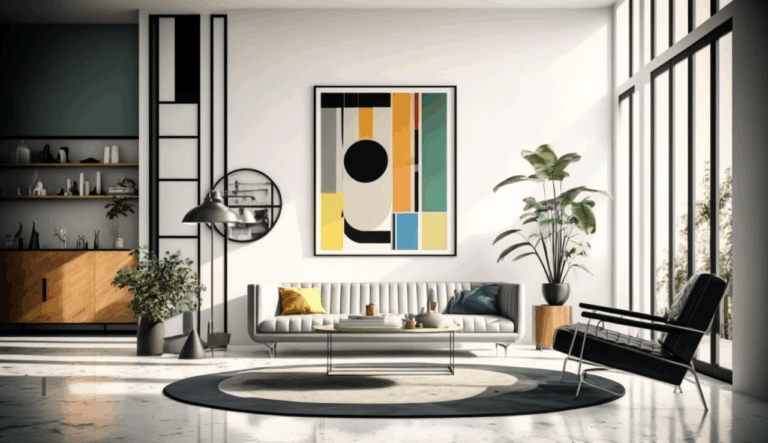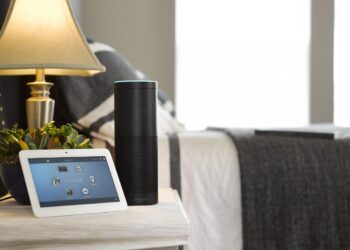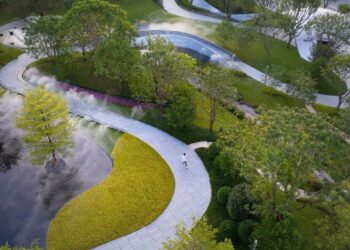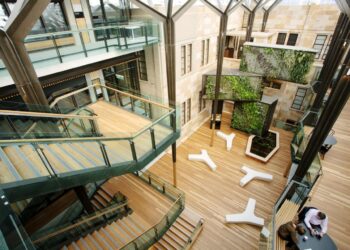The realm of interior design is perpetually in flux, a dynamic interplay of aesthetics, functionality, and human experience. As we navigate the 21st century, the very fabric of our living and working environments is undergoing a profound transformation. This isn’t merely about new furniture styles or color palettes; it’s about a holistic re-imagining of spaces to better serve our evolving needs, desires, and even our planet. The “Future of Interior Design” is not a singular destination but a continuous journey, marked by innovation, sustainability, technological integration, and an ever-deepening understanding of human psychology and well-being.
At its core, interior design has always been about creating harmonious and effective spaces. From the intricate carvings of ancient Egyptian tombs to the grandiosity of Baroque palaces, and the sleek minimalism of modern lofts, each era has left its indelible mark. However, the current trajectory is unprecedented in its pace and breadth. Driven by advancements in artificial intelligence, virtual reality, augmented reality, material science, and a global shift towards environmental consciousness, the industry is poised for revolutionary change. Designers are no longer just decorators; they are visionaries, problem-solvers, and even psychologists, crafting environments that not only look appealing but also feel right, promote health, and foster productivity.
The Rise of Sustainable and Biophilic Design
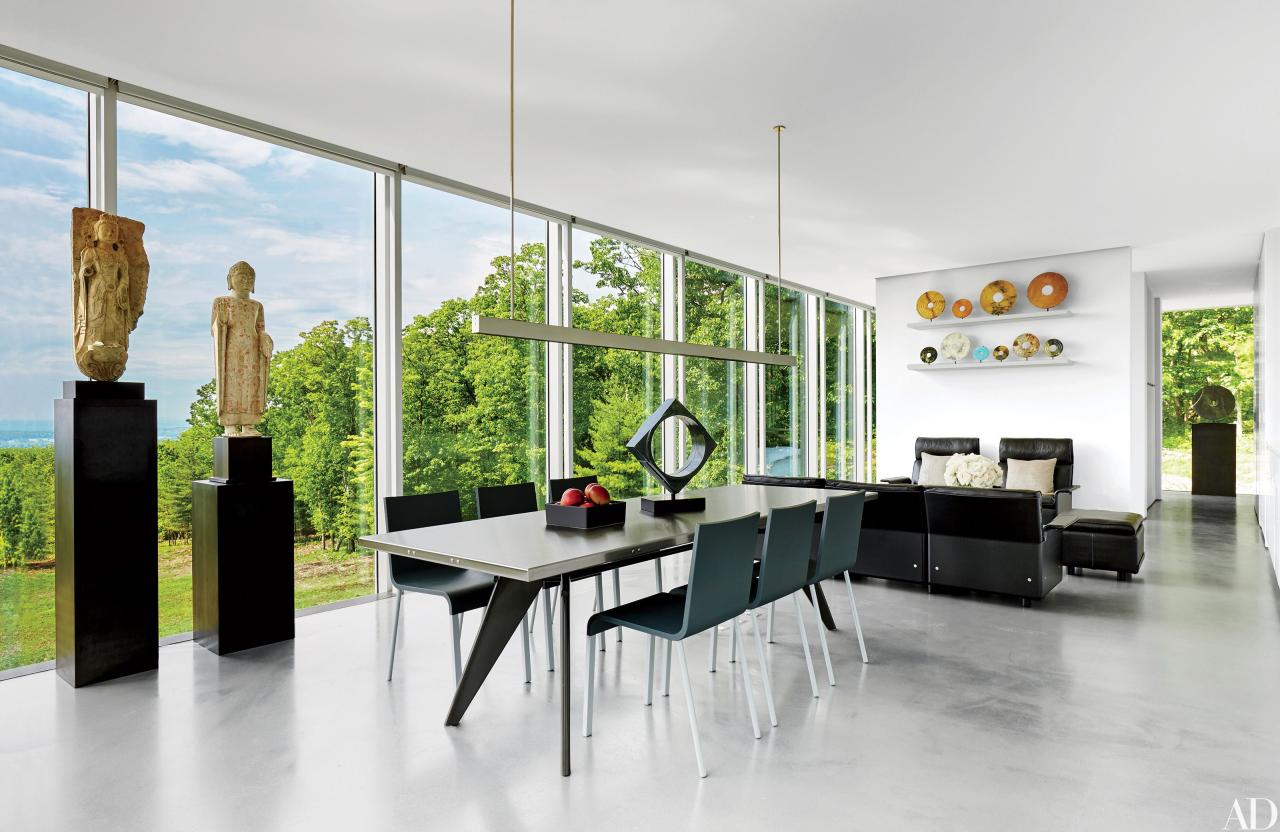
Perhaps the most significant overarching trend shaping the future of interior design is the unwavering commitment to sustainability. The planet’s finite resources and the urgent need to mitigate climate change are no longer abstract concepts but immediate imperatives. This translates into every facet of design, from material selection to energy consumption and waste management.
A. Eco-Conscious Material Selection:
* Recycled and Upcycled Materials: Designers are increasingly opting for materials derived from post-consumer or post-industrial waste. This includes everything from recycled plastics transformed into furniture and decor to reclaimed wood for flooring and paneling, and even upcycled textiles for upholstery. The emphasis is not just on using these materials, but on showcasing their inherent beauty and unique stories.
* Renewable Resources: Materials like bamboo, cork, and rapidly renewable timber are gaining prominence. Their quick growth cycles make them environmentally friendly alternatives to traditional, slower-growing hardwoods.
* Low-VOC (Volatile Organic Compound) Finishes: Paints, adhesives, and sealants that emit harmful chemicals are being phased out in favor of low-VOC or zero-VOC alternatives. This significantly improves indoor air quality, contributing to healthier living and working environments.
* Locally Sourced Materials: Reducing the carbon footprint associated with transportation is a key aspect of sustainable design. Prioritizing materials sourced from local suppliers and manufacturers not only supports regional economies but also minimizes environmental impact.
* Cradle-to-Cradle Design: This revolutionary approach considers the entire lifecycle of a product, from its creation to its eventual disposal or repurposing. Products are designed to be easily disassembled and their components reused or recycled, ensuring a closed-loop system with minimal waste.
B. Energy Efficiency and Smart Homes:
* Natural Light Optimization: Maximizing natural light reduces the need for artificial illumination, thereby saving energy. This involves strategic window placement, the use of light-reflecting surfaces, and open-plan layouts.
* Passive Heating and Cooling: Design strategies that harness natural phenomena, such as solar gain in winter and cross-ventilation in summer, are becoming standard. This minimizes reliance on mechanical heating and cooling systems.
* Smart HVAC Systems: Advanced heating, ventilation, and air conditioning systems that can adapt to occupancy levels and external conditions are crucial for energy conservation.
* Integrated Smart Home Technology: Beyond convenience, smart home systems play a vital role in energy management. Automated lighting, smart thermostats, and integrated appliance controls allow for precise energy monitoring and reduction.
C. Biophilic Design Principles:
* Connecting with Nature: Biophilic design is more than just adding plants; it’s about integrating natural elements and processes into the built environment to foster a deeper connection with nature. This has been shown to improve mental well-being, reduce stress, and enhance productivity.
* Natural Lighting and Ventilation: As mentioned, these are fundamental biophilic principles, mimicking natural conditions.
* Views of Nature: Providing occupants with views of green spaces, water features, or even a clear sky can have significant psychological benefits.
* Natural Materials and Textures: Incorporating wood, stone, and other natural materials in their raw or minimally processed forms brings the tactile experience of nature indoors.
* Patterns and Forms from Nature: Replicating organic shapes, fractal patterns, and natural rhythms in design elements can evoke a sense of calm and familiarity.
* Indoor Greenery: Living walls, indoor gardens, and strategically placed plants not only purify the air but also add vibrant life and visual appeal.
The Integration of Technology
Technology is no longer an afterthought in interior design; it’s an intrinsic component, seamlessly woven into the very fabric of our spaces. From intelligent lighting systems to virtual reality design tools, technology is revolutionizing how we conceive, create, and interact with our environments.
A. Smart Home Integration:
* Personalized Environments: Smart homes are evolving beyond basic automation. They are learning our preferences, anticipating our needs, and adapting to create truly personalized environments. Imagine lighting that adjusts to your mood, temperature that responds to your presence, and even music that flows seamlessly from room to room.
* Voice Control and AI Assistants: Voice-activated systems are becoming the central hub for controlling various aspects of the home, offering unparalleled convenience and accessibility.
* Predictive Maintenance: Sensors embedded within appliances and building materials can predict potential failures, allowing for proactive maintenance and preventing costly breakdowns.
* Health and Wellness Monitoring: Smart mirrors that analyze skin health, sleep trackers integrated into beds, and air quality sensors are becoming more common, empowering individuals to take a more active role in their well-being.
* Seamless Connectivity: The future home will be a fully connected ecosystem, where all devices and systems communicate effortlessly, creating a truly intelligent living experience.
B. Virtual and Augmented Reality (VR/AR) in Design:
* Immersive Design Visualization: VR and AR are transforming the design process itself. Designers can now create highly realistic virtual walkthroughs of proposed spaces, allowing clients to experience their future homes or offices before construction even begins. This reduces miscommunication, facilitates faster decision-making, and allows for real-time modifications.
* Virtual Showrooms: Consumers can virtually explore furniture, finishes, and decor from the comfort of their homes, trying out different combinations and seeing how they look in their own spaces using AR overlays.
* Collaborative Design Platforms: VR/AR tools enable designers, clients, and contractors to collaborate remotely in shared virtual environments, fostering greater efficiency and understanding.
* Training and Education: These technologies are also revolutionizing design education, providing immersive learning experiences and practical training simulations.
C. Personalized and Adaptive Spaces:
* Modular and Flexible Furniture: As urban living spaces shrink, the demand for adaptable furniture that can serve multiple purposes is growing. Think transforming tables, modular seating, and wall beds that disappear when not in use.
* Partitioning Solutions: Movable walls, sliding doors, and clever room dividers allow occupants to reconfigure spaces on demand, adapting them for different activities or privacy needs.
* Dynamic Lighting: Lighting systems that can change color temperature and intensity throughout the day can influence mood, productivity, and circadian rhythms, supporting overall well-being.
* Acoustic Control: Integrated acoustic panels and sound-absorbing materials are crucial for creating versatile spaces that can transition from quiet work zones to lively social areas.
The Human-Centric Approach
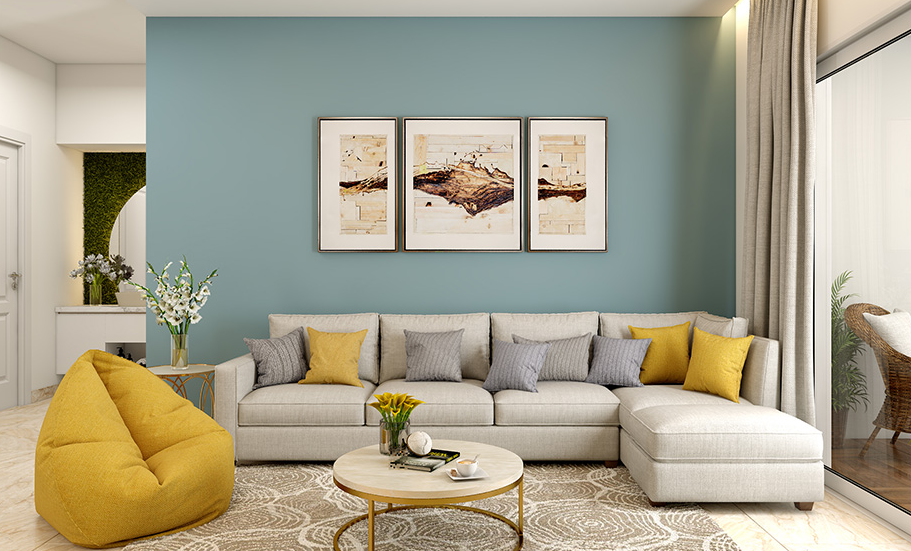
Beyond aesthetics and functionality, the future of interior design places a profound emphasis on human well-being and the creation of enriching experiences. This is a shift from merely designing spaces to designing for people – their emotions, their health, and their overall quality of life.
A. Wellness-Oriented Design:
* Air Quality and Ventilation: Beyond low-VOC materials, advanced air filtration systems, and proper ventilation are paramount to ensuring healthy indoor air, free from pollutants and allergens.
* Thermal Comfort: Maintaining optimal temperature and humidity levels is crucial for comfort and productivity.
* Acoustic Comfort: Minimizing unwanted noise and creating spaces with appropriate soundscapes is essential for concentration, relaxation, and privacy.
* Visual Comfort: Strategic lighting, glare control, and thoughtful color choices contribute to visual comfort and reduce eye strain.
* Access to Nature and Views: As highlighted in biophilic design, connecting with the natural world has profound positive impacts on mental and physical health.
* Ergonomics: Furniture and fixtures designed with human body mechanics in mind promote good posture, reduce discomfort, and prevent repetitive strain injuries.
B. Experiential Design:
* Multi-Sensory Environments: Designers are increasingly engaging all five senses to create immersive and memorable experiences. This includes curated scents, specific soundscapes, tactile materials, and even taste (in hospitality settings).
* Narrative-Driven Spaces: Spaces are being designed to tell a story or evoke a particular emotion, creating a deeper connection with the occupants. This is particularly evident in retail, hospitality, and cultural institutions.
* Personalization and Customization: Beyond smart home technology, experiential design allows for a high degree of personalization, reflecting the unique identity and preferences of the occupants.
* Flexible and Adaptable Spaces: As discussed, spaces that can transform to accommodate various activities and moods enhance the overall experience.
* Community and Connection: Design can foster a sense of community, whether through shared common areas in residential buildings or collaborative zones in offices.
C. Inclusive Design:
* Accessibility for All: Designing spaces that are accessible to people of all ages and abilities is no longer an option but a fundamental requirement. This includes considerations for wheelchair access, visual and auditory impairments, and cognitive differences.
* Universal Design Principles: These principles aim to create environments that are usable by everyone, to the greatest extent possible, without the need for adaptation or specialized design.
* Neurodiversity-Friendly Spaces: Recognizing that different individuals process sensory information differently, designers are creating spaces that cater to neurodiverse needs, offering areas for quiet contemplation, sensory stimulation, or reduced distractions.
The Influence of Global Trends and Cultural Fusion
The world is increasingly interconnected, and this global exchange of ideas, aesthetics, and cultural nuances is profoundly influencing interior design.
A. Cross-Cultural Aesthetics:
* Fusion Styles: Designers are expertly blending elements from different cultural traditions, creating unique and eclectic aesthetics that reflect a globalized sensibility.
* Traditional Craftsmanship Meets Modernity: There’s a renewed appreciation for artisanal skills and traditional craftsmanship from around the world, often integrated into contemporary designs.
* Influence of Travel and Migration: As people travel more and global migration continues, interior design reflects a rich tapestry of influences, bringing diverse perspectives into homes and public spaces.
B. The Blurring of Boundaries:
* Work-Life Integration: The lines between work and personal life are increasingly blurred, leading to home offices that are integrated into living spaces and corporate environments that feel more like homes.
* Hybrid Spaces: Retail spaces incorporating cafes, residential buildings with co-working areas, and museums offering interactive learning zones are examples of hybrid spaces designed to serve multiple functions.
* Indoor-Outdoor Flow: Creating seamless transitions between indoor and outdoor spaces is a major trend, maximizing natural light, ventilation, and a connection to nature. Large sliding glass doors, outdoor living rooms, and integrated gardens are key elements.
C. Emphasis on Authenticity and Storytelling:
* Unique and Bespoke Elements: In an era of mass production, there’s a growing desire for unique, handcrafted, and bespoke pieces that tell a story and reflect individuality.
* Repurposing and Vintage Finds: Incorporating vintage furniture, antique decor, and repurposed items adds character and history to a space, moving away from purely commercial aesthetics.
* Personal Narratives: Designers are working closely with clients to weave their personal stories, passions, and cultural heritage into the design of their spaces, creating environments that truly feel like home.
The Future of the Design Profession
The role of the interior designer is also evolving. It demands not only aesthetic prowess but also a deep understanding of technology, sustainability, human psychology, and business acumen.
A. Interdisciplinary Collaboration:
* Architects and Engineers: Closer collaboration with architects, structural engineers, and mechanical engineers is essential to integrate sustainable and smart technologies seamlessly.
* Psychologists and Sociologists: Understanding human behavior, cognitive biases, and social interactions is crucial for creating truly effective and well-being-enhancing spaces.
* Data Scientists: Analyzing data on user behavior, energy consumption, and space utilization can inform design decisions and optimize performance.
B. Specialization and Niche Markets:
* Healthcare Design: Designing therapeutic environments that promote healing and well-being in hospitals and clinics.
* Hospitality Design: Crafting immersive and memorable experiences in hotels, restaurants, and resorts.
* Workplace Design: Creating productive, collaborative, and wellness-focused office environments.
* Senior Living Design: Designing safe, comfortable, and stimulating environments for an aging population.
* Retail Experience Design: Crafting engaging and interactive retail spaces that drive sales and brand loyalty.
C. Ethical Considerations and Social Responsibility:
* Accessibility and Inclusivity: Ensuring designs are usable and welcoming for everyone, regardless of ability.
* Environmental Stewardship: Minimizing the ecological footprint of design projects.
* Fair Labor Practices: Sourcing materials and products from suppliers who adhere to ethical labor standards.
* Community Engagement: Designing spaces that foster social interaction and strengthen communities.
Conclusion
The future of interior design is bright, challenging, and profoundly impactful. It’s a field that is moving beyond mere decoration to become a critical discipline focused on creating healthier, more sustainable, and more enriching human experiences. The integration of cutting-edge technology, the unwavering commitment to environmental responsibility, and a deep understanding of human psychology are converging to redefine our relationship with the built environment. Designers are no longer just shaping spaces; they are shaping lives, fostering well-being, and contributing to a more sustainable and equitable future. The environments we inhabit will increasingly reflect our values, our aspirations, and our collective responsibility towards the planet and each other.

